Live in (or planning on visiting) the southern hemisphere soon? A first time visitor to the inner solar system is ready to put on the first of a two part act starting this month, as Comet C/2013 US10 Catalina breaks +10th magnitude and crosses southern hemisphere skies.
Though we’ve overdue for a this generation’s ‘great comet,’ we’ve had a steady stream of fine binocular comets in 2015, including 2014 Q2 Lovejoy, 2014 Q1 PanSTARRS, and 2015 G2 MASTER. US10 Catalina looks to follow this trend, topping out at just above naked eye visibility in late 2015 going into early 2016.
Discovered by the Catalina Sky Survey on Halloween 2013, the comet received its unusual ‘US10’ designation as it was initially thought to be an asteroid early on in a periodic six year orbit, until a longer observation arc was completed. This is not an unusual situation, as new objects are often lost in the Sun’s glare before their orbit can be refined.

We now know that US10 Catalina is on a million year long journey from the distant Oort Cloud. Most likely, it was disturbed by an unrecorded close stellar passage long ago. We say that such comets are dynamically new, and this passage will eject US10 Catalina from the solar system. The comet also has a highly inclined orbit tilted almost 149 degrees relative to the ecliptic, and was at +19th magnitude and 7.7 AU from the Earth when it was discovered, suggesting an intrinsically bright comet.
Prospects for US10 Catalina currently favor latitude 35 degrees north southward in late June, though that’ll change radically as the comet makes the plunge south this summer. As of this writing, US10 Catalina was at +11 magnitude ‘with a bullet’ and currently sits in the constellation Sculptor at a declination -30 degrees in the southern sky.
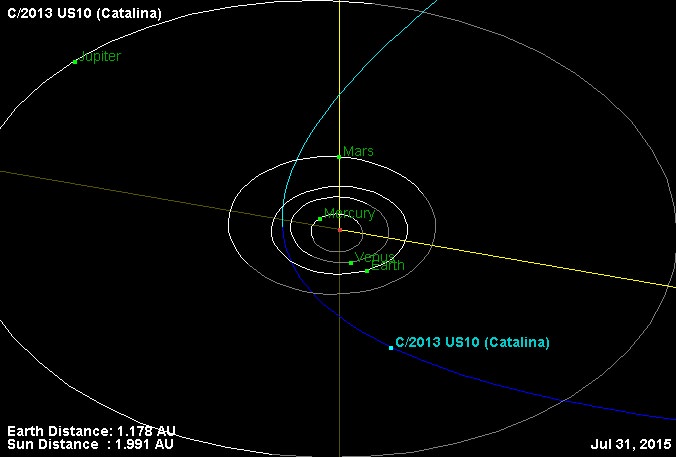
Binoculars are our favorite tools for observing comets, as they’ve easy to sweep the skies with on our cometary quest. As with nebulae and deep sky objects, keep in mind that quoted magnitude for a comet is spread out over its apparent surface area, causing them to appear fainter than a star of the same magnitude.
Here’s a blow-by-blow for Act I for Comet C/2013 US10 Catalina over the next few months:
(Unless otherwise noted, we documented stellar passages below that are within 2 degrees of stars brighter than +5th magnitude, and fine NGC deep sky objects brighter than +8th magnitude)
July 1st: May break binocular visibility, at +10th magnitude.
July 6th: Crosses into the constellation of Phoenix.
July 23rd: Crosses into the constellation Grus.
July 25th: Crosses into the constellation Tucana.
July 26th: Passes the +4th magnitude star Gamma Tucanae.
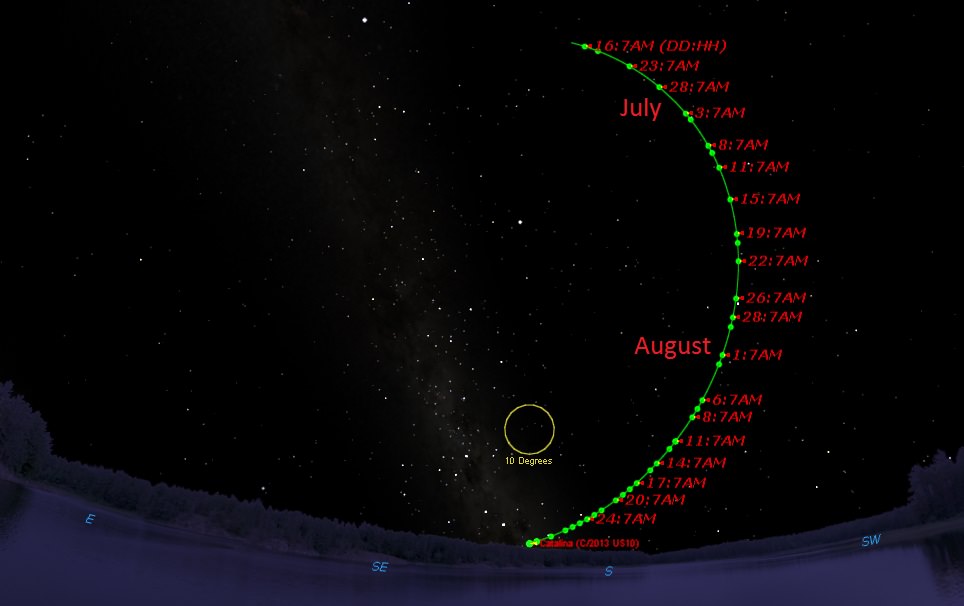
August 1st: Reaches opposition.
August 2nd: Passes the +4.5th magnitude star Delta Tucanae.
August 4th: Crosses into the constellation Indus.
August 6th: Photo op: Passes 12 degrees from 47 Tucanae and the Small Magellanic Cloud.
August 8th: Crosses into the constellation Pavo.
August 12th: Passes the +4th magnitude star Epsilon Pavonis.
August 14th: Reaches its greatest declination south at almost -74 degrees.
August 15th: Sits at 1.1 AU from the Earth.
August 17th: Crosses into the constellation Apus.
August 19th: Passes 5 degrees from the +7.7 magnitude globular cluster NGC 6362.
August 22nd: Crosses into the constellation Triangulum Australe and passes the +1.9 magnitude star Atria.
August 28th: Passes the +2.8 magnitude star Beta Trianguli Australis.
August 29th: Passes 3 degrees from the +5th magnitude open cluster NGC 6025.
September 1st: Crosses into the constellation Circinus
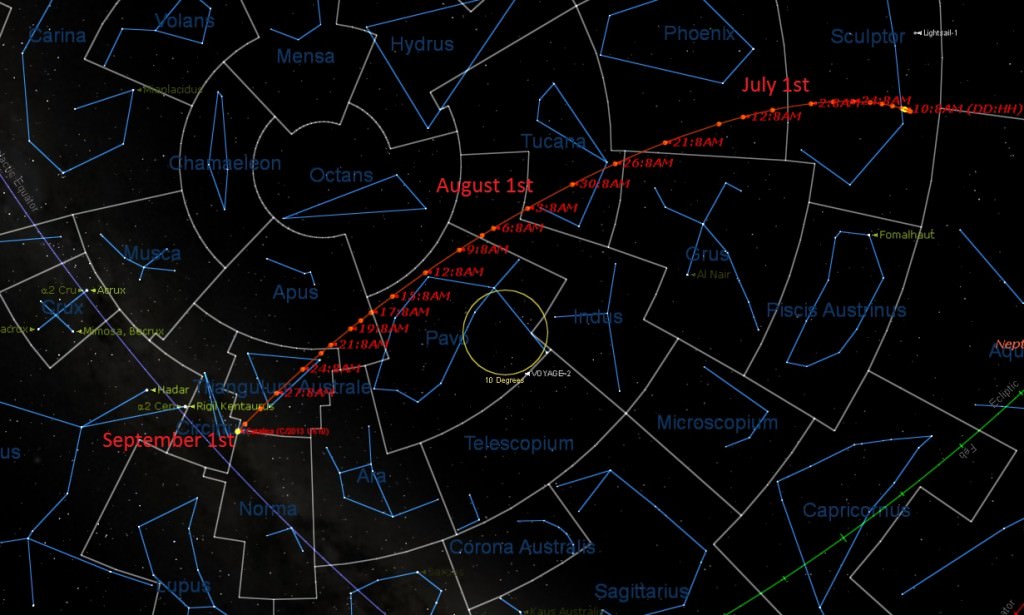
From there, Comet US10 Catalina heads towards perihelion 0.8229 astronomical units from the Sun on November 15th, before vaulting up into the northern hemisphere sky in the early dawn. Like Comet Q2 Lovejoy last winter, US10 Catalina should top out at around +4th magnitude or so as it glides across the constellation Ursa Major just after New Years.
And like many comets, the discriminating factor between a ‘great’ and ‘binocular comet’ this time around is simply a matter of orbital geometry. Had C/2013 US10 Catalina arrived at perihelion in the May time frame, it would’ve passed less than 0.2 AU (30 million kilometres) from the Earth!
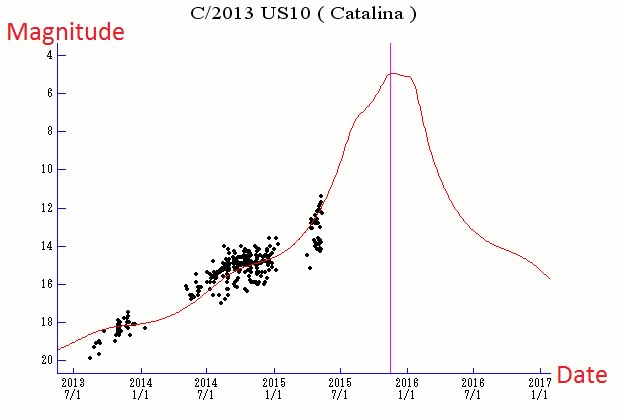
But that’s cosmic irony for you. Keep in mind, with Comet US10 Catalina being a dynamically new first time visitor to the inner solar system, it may well up brighten ahead of expectations.
And there’s more to come… watch for Act II as we follow the continuing adventures of Comet C/2013 US10 Catalina this coming September!

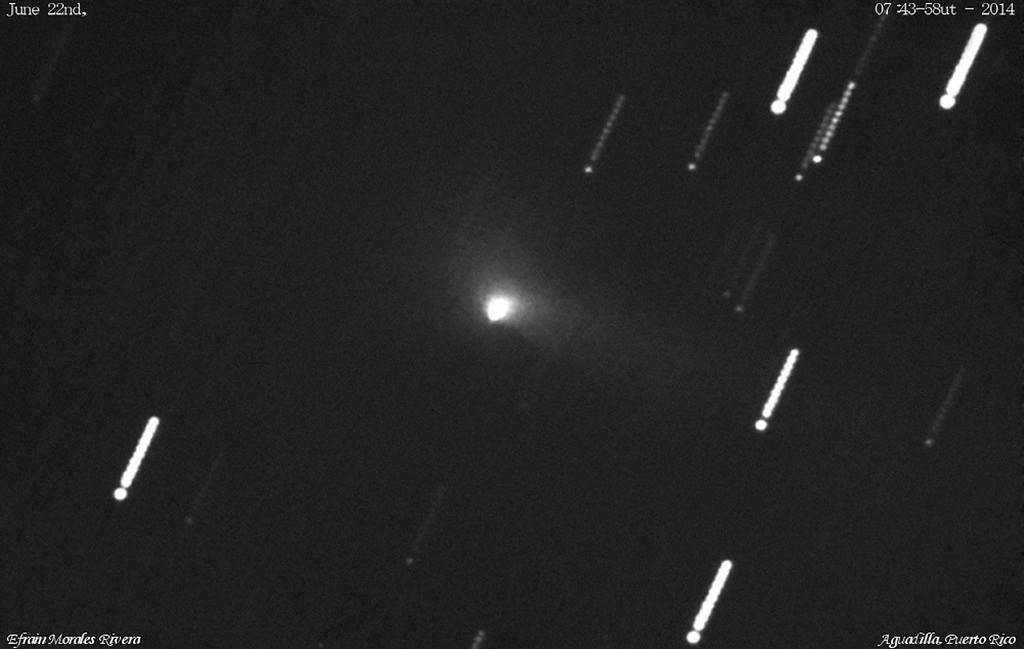
Good that you are thinking about our ‘southern hemisphere friends’! HOWDY to Thee! I’m at 37* N so this one looks pretty much like a ‘no show’ para moi. I note that in the SkyHound website, under Comet Chasing.. there are several southern hemisphere comets visible in large(er) amateur telescopes. Am I jealous? A tad…. and would like to travel down that way if I had a chance…
Thanks… we will get a shot at this one up north later this year.
So.. I finally finished (Ha!) my 12 1/2″ Newtonian and the very first object I focused in on was Comet Lovejoy! Sweet! This last spring I familiarized myself with the galaxies in Ursula Major, Leo, Virgo and Coma Bernices… But now, I’m ready for another Comet! (Lovejoy was my 50th comet sighting!) CLEAR tonight… so next up is some Earl Grey, hot… and some star gazing. The wife’s in Yosemite with friends, so no interruptions. The phone is off line..